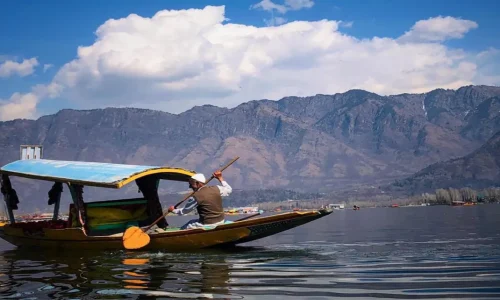JAMMU TOURISM
The southernmost part of Jammu & Kashmir state. Explore Jammu, the state's winter capital and popular tourist destination, which offers breathtaking views of the Shivaliks, Pir Panjal Range, Trikuta Hills, and the low-lying Tawi River basin. Known as the "City of Temples," Jammu is home to several Hindu sanctuaries, notably that of Vaishno Devi. The city displays a strong Harappan civilization impact, as well as the Mughals, Sikhs, and British in order of precedence, along with dynasties such as the Maurya, Kushan, Kushanshahs, and Gupta.

Principal Attractions
Are you trying to find an amazing vantage point and path? Take a look at the Ranbir Canal. This canal has a little garden that makes a refreshing summertime picnic area.
You can reach the renowned Bahu Fort & Gardens 5 km from the city center. Located on the Tawi River’s edge, the fort is thought to have been built by Raja Bahulochan some 3000 years ago. Within the fort stands a temple devoted to the Hindu goddess Kali. Later, the Dogra emperors created the stunning “Bagh-e-Bahu,” a tiered garden surrounding the fort that draws a lot of visitors.
Mansar Lake is a popular destination for nature enthusiasts. Hills and thick trees encircle the lake. Boat rides and the Baisakhi festival, which is hosted by J&K Tourism and features food and crafts, draw large crowds of people to this lake.
You will reach Jammu’s medieval town of Akhnoor by traveling west of the city. The town, which is located along the Chenab River, is known for the Soni-Mahiwal mythology. The Indus-Valley civilization’s impact is also evident here.
Many religious sites, including Vaishno Devi, Raghunath Temple, Ranbireshwar Temple, Mahamaya Temple and City Forest, Peer Khoh and Peer Baba, are accessible to pilgrims in Jammu and the surrounding area.
Cuisine And Food
The same typical Kashmiri fare, including a range of non-vegetarian foods, can be found in Jammu. However, the Rajput cuisine is the specialty. A vast variety of fried and spicy Rajput meals are available in Jammu.
Purchasing
There’s a ton of wooden and papier mâché goods available for purchase. Jammu’s handcrafted goods are another reason why people visit the area. In addition, this is a significant pilgrimage site with a number of god and goddess shrines.
Plants and Animals
Many trees, such as silver fir, horse chestnuts, and maple, can be found near river locations. There are plenty of birch, rhododendron, erbera, and other herbal plants in the hills. In addition to lush forests, these mountainous areas are home to bears, brown musk shrews, muskrats, deer, cheetahs, and leopards. The area is home to a variety of wildlife, including chakor, snow partridge, pheasants, and peacocks, as well as bats, lizards, frogs, and snakes.
Ideal Time To Go
The ideal months to visit Jammu are thought to be October through February.Local legends and a few documents indicate that Raja Jamboolochan built Jammu in the fourteenth century. Jammu is a popular tourist destination that attracts thousands of visitors from all over the world in every season, making it a significant economic hub.

